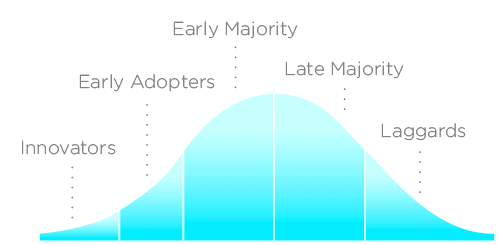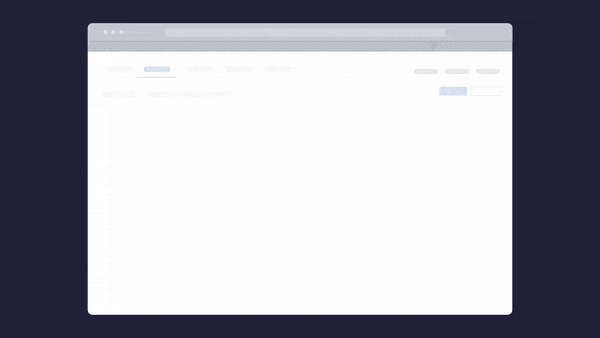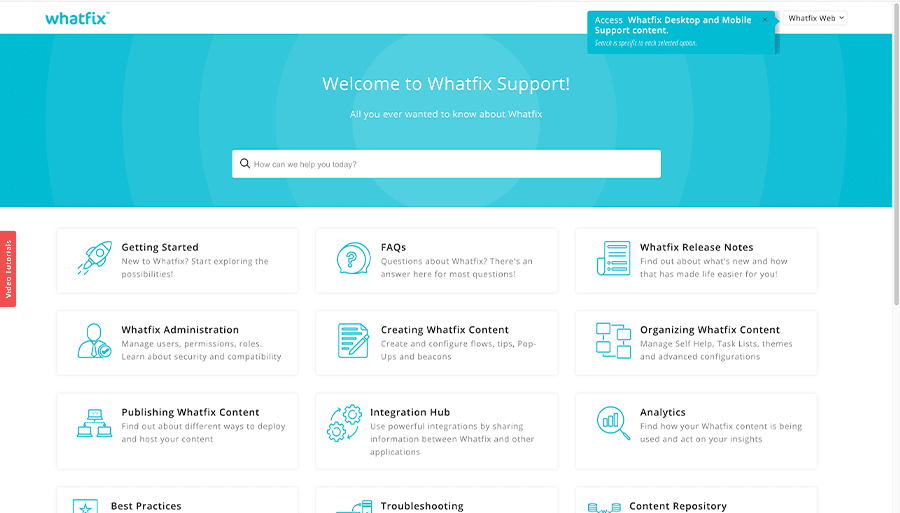Achieving a high product adoption rate is key to the success of any product. While you may have a great product, without proper adoption, it’s all for nothing.
When your customers find value in your product quickly, they build habits and the product becomes sticky, leading to adoption. A high product adoption rate lowers customer churn, improves your user retention rate, drives renewals, and leads to more stable revenue and higher growth.
To achieve a high digital adoption rate for your product, you need to understand the key drivers of adoption, track and measure specific metrics, and employ the right software.
What Is Product Adoption?
Product adoption is the process of discovering and using a product, understanding its value, and becoming a regular, proficient user through habit building and realizing its value. The product adoption process involves a number of small, habit-forming steps that aim to convert a prospective user into a satisfied customer. Adoption is much more than the act of getting a customer to use your product — it’s heavily tied to the value they drive from it and showcase its contextual, outcome-driven value from it.
The 5 Stages of Product Adoption
The customer journey to full adoption follows five distinct stages as they learn about your product and decide if it’s a good fit. The product adoption process can be broken down into five distinct stages:
- The Awareness Stage
- The Interest Stage
- The Consideration Stage
- The Trial Stage
- The Adoption Stage
1. The Awareness Stage
In this stage, a potential customer learns of the existence of your product. This stage is all about brand awareness, as your potential users and customers don’t know your product exists. You’re tasked with driving product awareness through whatever channels work best for your product, industry, and target persona.
Potential channels to drive awareness of your product include social media, video marketing, case studies, content marketing, and so forth.
Examples of product campaigns to drive awareness include:
- Movie promos and teasers
- Pre-launch events
- Artists sharing snippets of a song
- Influencer marketing campaigns
- New product launch email campaigns
2. The Interest Stage
In this stage, the potential customer knows of your brand and is interested in learning about your products or services. It’s crucial for your to make your product’s information easily accessible and found, simple to grasp, and easy to navigate.
Examples of assets to drive product interest include:
- Case studies and white papers
- Landing pages
3. The Consideration Stage
The potential customer starts thinking about how your product will fit into their workflow and examining if it will meet their needs. They will begin to compare your product to similar products.
In this phase, the prospective customer will be highly analytical of your product, especially for more expensive and complex tools. They’ll look at your product more intensively and ask specific questions. They may request a demo of your platform or product.
Examples of channels to utilize for the consideration stage include:
- Customer reviews
- Comparison pages
- Webinars
4. The Trial Stage
The potential customer becomes a new user — they’ve compared products and want to try yours because they want to see if it does something better than the competition. They sign up for a free or paid trial and take your product on a test drive, but they aren’t using it regularly. It’s important in the trial stage to set your new user up for success by setting expectations and delivering on any product promises you made have already made in the sales and marketing cycle.
Examples of strategies to utilize for the trial stage include:
- Customer success check-in meetings
- Onboarding UX
- New user videos
- Product tutorials
5. The Adoption Stage
In the adoption stage, a customer experiences their aha! moment. They solve a problem that makes them realize the full value of your product. In turn, your product becomes a valuable asset to that customer’s processes and workflows, and they are unable to complete everyday tasks without your product.
The awareness stage is extremely critical, as it encompasses new user onboarding, continuous learning, and user support. This stage is where customers understand the full value of a product. Products that do this the best are able to utilize a product-led growth strategy that uses its product’s features and value to drive retention, upsells, and grow as a company based on the power of your product.
The Product Adoption Curve
It’s important to remember that the adoption process will be longer for different individuals, depending on where they fall on the technology adoption curve – as some people are able (or more willing) to adapt to change faster.
The product adoption curve consists of five groups of people:
- Innovators – 2.5% of people: these are individuals willing to task risks and that are enthusiastic about new technology
- Early Adopters – 13.5% of people: the early adopters are willing to utilize new technology and are easily persuaded by innovators – however they are concerned about their reputation and wait to see some initial results before jumping on board.
- Early Majority – 34% of people: the early majority show some interest in technology, but wait to wait to see what happens with the early adopters before jumping on board – they are more practical in nature.
- Late Majority – 34% of people: this cohort of individuals are cautious of new technology and wait for a majority of the population to adopt a new process to see its impact – many times they wait too long.
- Laggards – 16% of people: the final cohort of people are those who are resistant to change and skeptical of new technology.

The key to a successful product adoption strategy is to know the stage of your product in the overall adoption lifecycle – and shorten the time between early adopters and the early majority.
Products that are able to cross this chasm become viral and find mainstream success in their market due to their ease of use, popularity, and benefits.

Why Is Product Adoption So Important?
Adoption is one of the most important indicators of a successful product. You need regular, happy users to stay in business for any length of time and grow your organization. Two of the main reasons why a strong product adoption strategy directly impacts your growth include:
1. Acquiring New Users Is Expensive
Customer acquisition costs (CAC) go up every year. When your product has a high adoption rate, your customer acquisition cost goes down. On top of this, acquiring new customers is much more costly than retaining current customers. High adoption also stabilizes your revenue and creates space to grow and expand.
2. High Adoption Drives Product-Led Growth
High adoption rates also open the door to increasing your customer lifetime value (CLV), gaining new customers, improving your NPS, and other critical SaaS customer success metrics.
When your users are actively using your product with a high level of proficiency, they are more likely to renew their contract and potentially purchase additional products or add-on services from your company. Happy users who share their positive experiences with your product can bring new users onboard based on that positive feedback.
How to Track and Measure Product Adoption
There are a few ways to measure adoption — the more simple way is to figure out how many customers have signed up or subscribed over a given time period, then divide that number by the number of active users — those who regularly log in — in that same time period. If you multiply that number by 100, you’ll get your adoption rate percentage.
For example, if you had 200 new signups last month and 100 of them became active users, your adoption rate for last month would be 50%.
If you want to get more granular, you can track user behaviors that give you clues on which users will reach the adoption stage. For example, you can determine the time-to-first-key-action by learning how quickly your users are taking advantage of a key feature inside your product. By looking at that number and comparing it to users who have fully adopted your product, you can see which behaviors lead to retention.
Learn more about tracking and measuring adoption by exploring our guides to behavior analytics and the most important product adoption metrics to watch.
Factors that Impact Your Product Adoption Rate
Adoption is dynamic, with a lot of moving parts. There are a number of different factors that can influence your adoption rate, and understanding the following factors can help you spot areas for improvement.
1. Value of the product
Value refers to the overall ability of your product to meet your user’s needs. Your adoption rates will be higher if users recognize the value of your product. To build adoption, your customers need to understand what your product does better than the competition.
This means creating a strong product knowledge training strategy for your organization that helps to ensure that all teams – from marketing, product, to sales – all understand how your product solves core problems for your customers. If marketing positions a product in a certain way that is incorrect, this will lead to unhappy customers and a poor adoption rate.
2. The user’s initial impression of the product
Your users’ value judgments are influenced by their first impressions. Missteps at this stage — such as lacking user documentation, a poor user onboarding experience, or bad customer service — will result in a direct negative impact on the adoption of your product. The insight gained by your users’ impressions can be used to improve your customer experience.

Your users’ first impression is critical to the stickiness of your product. Create interactive, in-app experiences for your product to ensure a positive first experience with Whatfix.
3. Your customer experience and support
Strong customer support can make a positive impact during the early phases of the adoption process when users are still getting to know your product. Today, many users prefer customer self-service support features that empower them to access on-demand support in the moment of need.

4. Continuous product improvements
Improving your product on a regular basis — such as fixing bugs quickly and launching new features — gives users more reasons to stay with your product and shows that you’re an evolving, innovative company. Be sure to conduct regular user surveys to understand where your product can be improved on, and what features are most desired among your core users.
Key Product Adoption Metrics & KPIs
Here are a few of the most metrics for SaaS customer success and product teams to measure to help benchmark and improve their product’s adoption rate.
1. Time-to-Value (TTV)
This is the time it takes for a user to find value in your product, similar to that of the aha! moment. Time-to-value is important for gauging adoption because users will churn if they don’t realize the value of products within a certain timeframe. For example, when a user completes a multi-step task, the total amount of time to complete that task is the TTV.
2. Frequency of Use
The rate of use metric measures how often a customer uses your product or specific features. It can help you identify any obstacles keeping your product or feature from being used more frequently. Obstacles can include technical issues or unclear navigation that forces your customer to hunt for what they need.
3. Onboarding Completion Rate
Onboarding completion rate is the percentage of users who complete your entire onboarding process. A low rate indicates issues with your onboarding flow that may lead to reduced adoption, such as incomplete instructions or not explaining how to use your product in enough detail.
4. Churn Rate
Churn rate refers to the number of users who stop using your product after a certain amount of time. As more users adopt your product, your churn rate will decrease.
5. Daily and Weekly Active Users (DAUs and WAUs)
These numbers show how many of your customers are using your product at specific intervals. Daily active users (DAU) is your number of unique users per day; weekly active users is your number of unique users per week. Tracking these metrics helps you understand customer retention, engagement, and product usage patterns. The easiest way to track DAUs and WAUs is to look at how many users are logging into your product every day or week.
6 Tips to Improve Your Product Adoption
The best way to increase the adoption of your product is to improve the process – from making your product more sticky to alleviating friction in your onboarding experience. You’re much more likely to gain full adoption if you provide a strong user experience throughout the product adoption lifecycle. The following tips will help you create a smooth, frictionless product adoption process:
1. Improve Your User Onboarding Experience
Onboarding is your first and only chance to make a good impression. If your onboarding is incomplete or confusing, users will abandon your product before they find value – or in some cases, even get started with your product. Making improvements to your onboarding experience by finding and fixing knowledge gaps can have a positive effect on the number of users who fully adopt your product.

Above: Example of Slack’s new user onboarding flow.
With a digital adoption platform like Whatfix, product teams are empowered to create, analyze, and test in-app experiences, walkthroughs, and onboarding flows without the need for engineering support. With Whatfix’s no-code editor, product managers can create, launch, and iterate quickly on contextual, segmented onboarding flows that showcase a product’s core value and features, as well as provide in-app guidance to achieve the steps you’ve identified as the key indicators of realizing value in a product.


For example, you can create in-app onboarding experiences featuring product tours and task lists that target various customer personas. Does your product have multiple use cases? Contextual, outcome-driven onboarding experiences have much higher completion rates and lead to much higher adoption rates.
2. Conduct User Testing and Research
User testing allows you to find out exactly where users are having issues, UX issues inside your product, how they’re using your product, and much more. Conducting research at the user level gives you insight into your users’ behavior and how they feel about your product. You can use that qualitative and quantitative information to make meaningful improvements.
3. Target Users With In-App Messaging
In-app messages are notifications and nudges users receive while they’re using a product, and can be very effective for improving your product adoption. These targeted, in-app notifications can be used to help users during onboarding, call out new or underutilized features, proactively offer on-demand support, and much more.


4. Promote New Features, Product Updates, and Workflow Changes
Take advantage of every opportunity to communicate new features and updates to your users – both inside and outside your application. Highlighting new ways your product can help shows your customers that you’re committed to improving their experience and constantly looking at new ways to bring value to them.
Drive new feature adoption with in-app hotspots, tool tips, and pop-ups and take your customers on an interactive, step-by-step walkthrough on how to use these new features.
![]()
5. Create User Flow Charts and Journey Maps
User journey maps and user flow charts are visual representations of the events and paths a user goes on when navigating your product. They’re helpful for boosting product adoption because they illustrate behaviors and pain points in your product and point your development team to the exact areas that need to be improved – many times before a product has even launched.

Above: Example of a detailed user flow chart.
6. Continuously Improve Your Product
Developing a continuous improvement cycle is essential for increasing product adoption. Each time you collect feedback from users and make improvements based on that feedback, your adoption rates can improve. This shows users that you’re a company that listens to its customers and always keeps their best interest in mind when developing your product roadmap.

Above: Gather feedback from your users on your onboarding and in-app flows with Whatfix
6 Types of Software to Increase Your Product Adoption
Specialized software can assist in improving user adoption by empowering you to learn more about your customers who use your product, train users on how to use your tool, provide customer support in the moment of need, and much more.
Here are six types of applications every organization must include in their software stack to drive product adoption:
1. Digital Adoption Platforms (DAPs)
A digital adoption platform is a type of software that lays on top of your product, allowing you to create interactive, in-app content such as interactive walkthroughs, product tours, self-help widgets, tooltips, task lists, beacons, and more.

Above: Whatfix’s digital adoption platform
These platforms can help you improve product adoption by giving users a helping hand as they move through your product – all in a no-code environment, meaning your organization doesn’t need support from your product or development team to create and launch these UI assets.
2. A/B Testing Software
A/B testing software empowers you to test different versions of the same page, widget, CTA, area, or any UX design or UI widget on your product to quickly gather feedback on its functionality and usability. The purpose of A/B testing is to improve the UX of your product by showing different versions of the same design to different sets of users through a series of routine cohort tests.
This type of software empowers product teams to set up clear tests with control and experiment groups to see the impact of a minor (or in sometimes a major) change on real users.
3. Live Chat Tools
Live chat tools allow you to offer live customer support directly in your product. Offering live chat results in quicker responses to customer queries and concerns, and helps minimize the time it takes for users to get help. In fact, live chat software is:
- Rated as the most satisfactory form of communication with a company, with 73% of customers preferring to use live chat support
- Improves conversion rates by an average of 3.84%
- Costs up to 33% less compared to other forms of customer support communication channels
4. User Feedback and Survey Tools
Feedback and survey tools help you drive adoption by collecting and analyzing user feedback, setting you up with the data to measure your users’ satisfaction levels. The insights you gather from these tools can be used to pinpoint areas where your product is working well, where there’s room for improvement, and much more. These tools also help adoption rates by generating a sense of engagement and connectivity with your user base.

Above: Example of product satisfaction survey.
5. Knowledge Base Software
Knowledge base software provides organizations with a tool to create, house, and share content in a searchable knowledge base. Knowledge bases include answers to frequently asked questions, tutorials on how to use your product, and much more – all available any time a user may need support, without needing assistance from your customer support team.

Above: Example of Whatfix’s knowledge base to help customers solve FAQs, find product tutorials, read release notes and more.
6. Marketing Automation Software
With advanced marketing automation software such as Marketo or HubSpot, you can connect it with your product and use behavioral data to send targeted emails to different segments of your users. For example, you can send getting started tips to new users and explain more advanced features to users who have completed your onboarding. You can also send time-based notifications to users who may have not logged into your product in a set amount of time, send reminders on new feature launches, and much more.
Product Adoption Clicks Better With Whatfix
Every user’s adoption timeline is different. You can’t rush the process — some of your users will reach full adoption almost immediately, while others may take a while to decide if your product is the right tool for them. The most essential part of working to improve the adoption of your product is to keep a close eye on your users, uncover and study their needs, and make adjustments as quickly as possible.
With Whatfix, you can offer your users in-app guidance and contextual support to improve their experience and drive user adoption. Learn more about Whatfix now!







